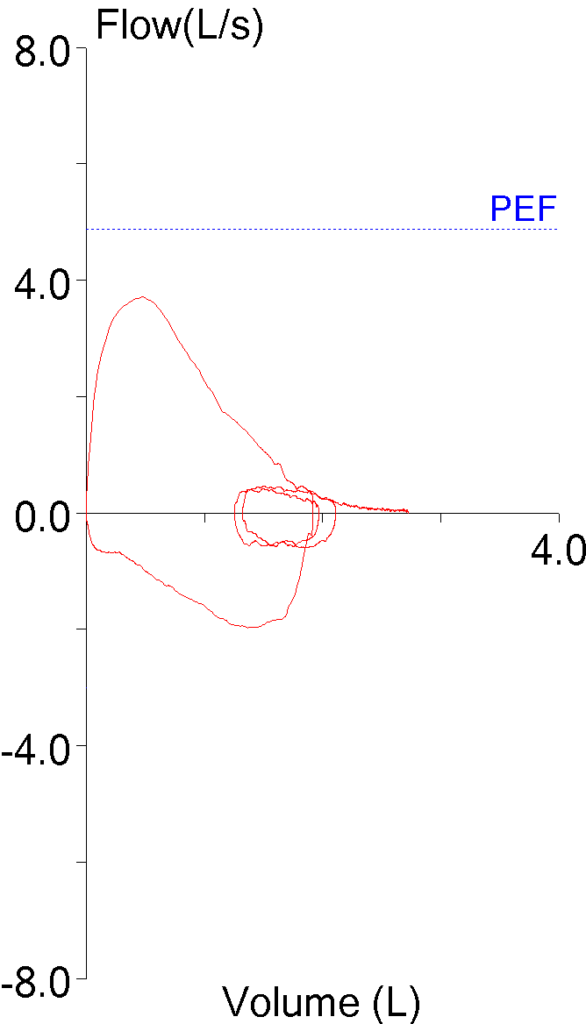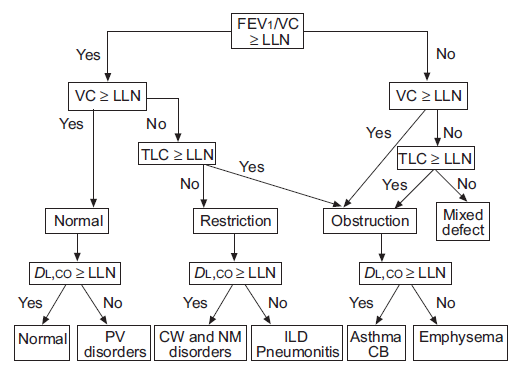I’ve been reviewing the literature on PFT interpretation lately and in doing so I ran across one of the issues that’s bothered me for a while. Specifically, my lab has been tasked with following the 2005 ATS/ERS guidelines for interpretation and using this algorithm these results:
| Observed: | %Predicted: | LLN: | Predicted: | |
| FVC: | 2.83 | 120% | 1.76 | 2.36 |
| FEV1: | 1.77 | 100% | 1.26 | 1.76 |
| FEV1/FVC: | 63 | 84% | 65 | 75 |
would be read as mild airway obstruction.
Although it’s seems odd to have to call a normal FEV1 as obstruction I’ve been mostly okay with this since my lab has a number of patients with asthma whose best FVC and FEV1 obtained at some point in the past were 120% of predicted or greater but whose FEV1 frequently declines to 90% or 100% of predicted. In these cases since prior studies showed a normal FEV1/FVC ratio then an interpretation of a mild OVD is probably correct even though the FEV1 itself is well above the LLN, and this is actually the situation for this example.
Continue reading


